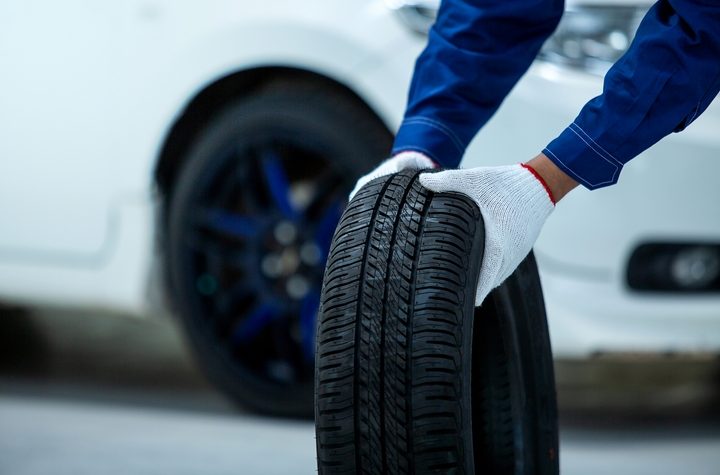Tire damage comes in many forms and different levels of severity. Whether you are a defensive or offensive driver, chances are your tires will experience damage sooner or later, and there’s nothing you can do in terms of avoiding them. Tire damage may even occur without the driver becoming immediately aware of the problem. It may be caused by a road traffic incident, debris on the road, or potholes.
Remember to observe the manufacturer’s recommendations about how to ensure the longevity of your new tires. In this case, ignorance will translate into costly tire repairs. Regardless of the cause, being able to identify and diagnose different types of tire damage allows you to confidently figure out what needs to be done.
The following are six common tire damage types:
Type #1: Punctured Tire Damage
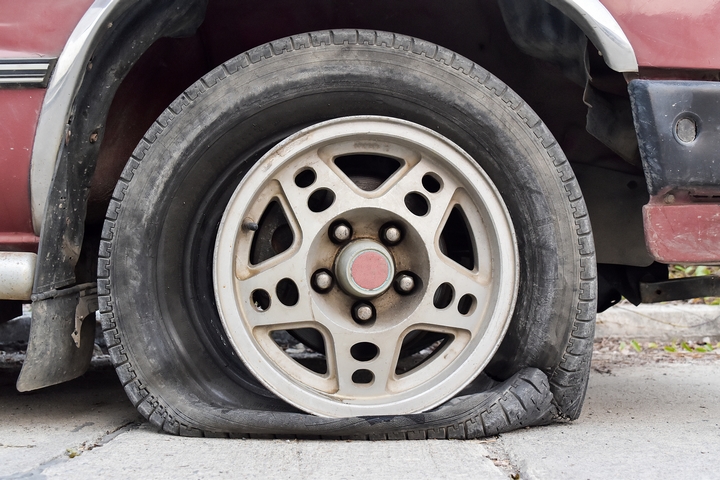
Punctures is a tire damage type that occur when a sharp object pierces through the outer wall of the tire. The objects include loose nails, shards of glass, or screws. Cracks in the tarmac are also a major cause of punctures. If the object causing the puncture gets deep into the tire, it forms an escape hole where a lot of air pressure is lost. This might lead to reduced handling or loss of grip.
There are two types of punctures: rapid and slow punctures. To identify a slow puncture, check whether the tires have debris stuck on their surface or a damaged sidewall. They could also be deflated, or misshaped. Rapid punctures are easy to identify since the tire suddenly losses air pressure, inhibiting your ability to drive. A rapid puncture also causes knock-on effects to your vehicle’s handling.
If you experience a puncture on the road, you can make a temporary fix by using a sealant from a tire repair kit to plug the hole then re-inflate it. You can also replace the tire with the spare wheel and drive to the nearest garage to look for assistance or purchase a new tire.
Type #2: Tire Wall Damage
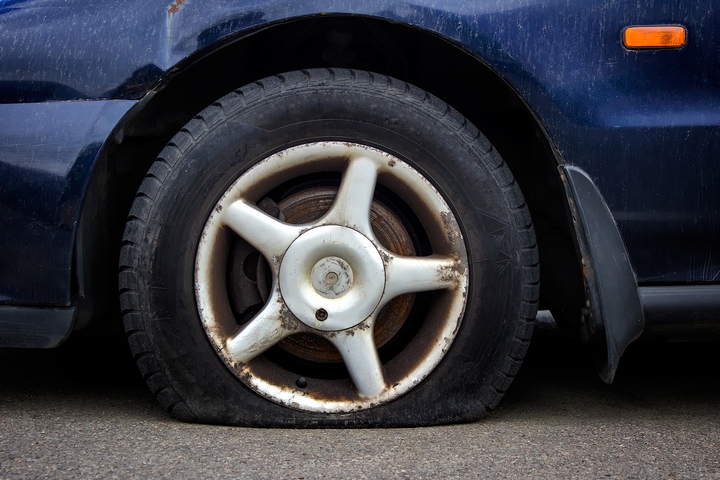
Tire wall refers to the outward-facing sides of the tire that surround the rim. Tire walls are quite strong as they are made to withstand a lot of pressure. However, they can still be damaged by bulges and cuts. Bulges are often a result of an impact.
This happens when you hit a pothole or mount a curb, which causes the structural integrity of the sidewall to weaken at the point of impact. In turn, the pressure inside the tire causes a bubble to protrude on the surface.
Sidewall cuts are also caused by impact, but they are much more severe as they can cause blowouts. This could also be a result of driving over sharp objects with an under-inflated tire. To identify tire wall damage, check for bubbles trapped under the surface of the tire or open slits in the sidewall.
A damaged tire wall is not something you can repair because the integrity of the tire is already compromised. The best thing to do in this situation would be to use a mobile tire replacement service or drive safely to the nearest garage.
Type #3: Cracked Damage
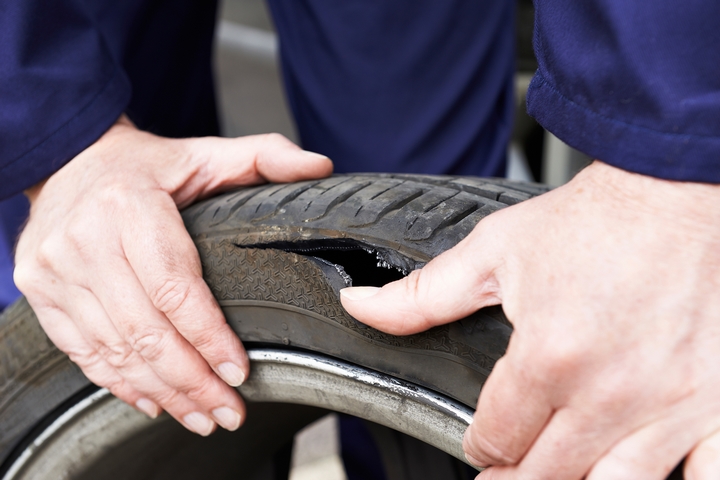
Cracks commonly occur on the sidewalls or the surface of the tire in contact with the road. Cracks can range from less than a millimetre to over a centimetre thick. They are caused by bad road conditions, exposure to UV rays, or general wear and tear. They can cause a loss in grip, reduced handling or, worse, cracks. Since cracks can’t be effectively repaired, tire replacement is the best option.
Type #4: Irregular Tread Wear

There are several common types of irregular tread wear. These include wearing caused by normal tire usage. Others are centre wear, which results from over-inflated tires, and one-sided wear caused by misaligned tires. To identify tread wear, simply examine your tread bars. The amount and location of wear on the tires will tell you which type of tread wear you’re dealing with. To fix irregular tread wears, replace the affected tires and invest in a fix that will prevent it from happening again.
Type #5: Tire Bust
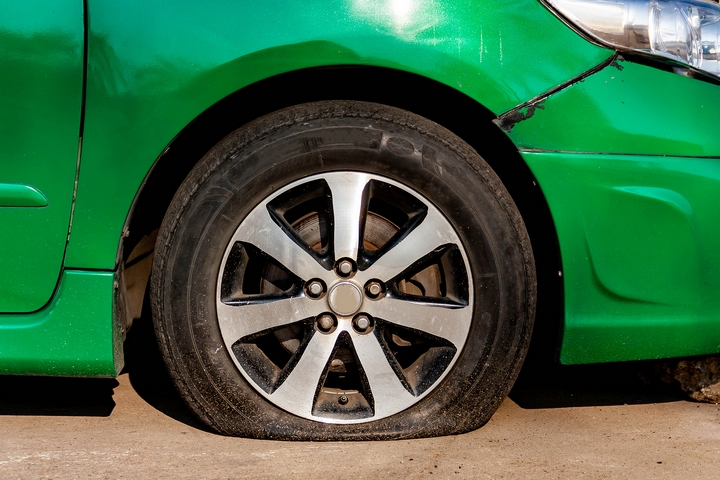
This is the most dangerous type of tire damage. It occurs when the integrity of the tire wall fails, which makes it difficult for the tire to hold air. A tire bust is commonly caused by under-inflation. This is because an under-inflated tire bulges out due to the car’s weight, which is then affected by the friction and heat from driving, eventually causing it to burst.
A tire bust is easy to identify since you will hear the sound of the tire bursting. Your vehicle’s handling will also change. A tire burst causes the steering wheel to get pulled to the side of the bust tire. To fix this, get a new tire.
Type #6: Cut Tire Damage
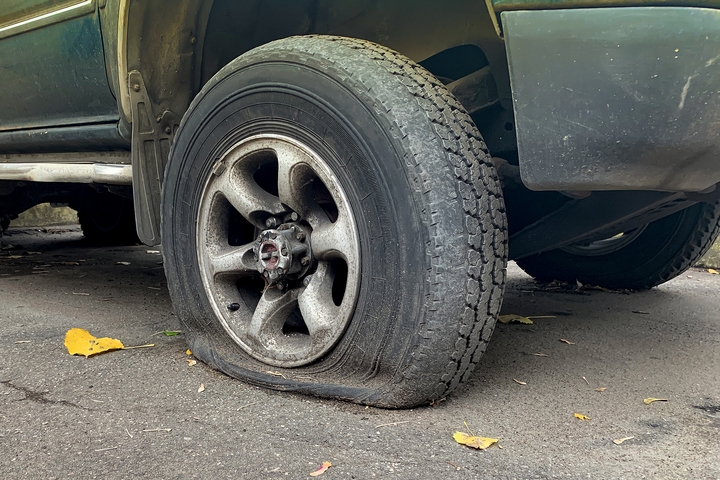
Cuts are caused by external influences such as protruding bodywork parts, bad road conditions, or sharp, foreign objects like glass or stones. If you notice damage in the form of cuts on the tire surface, visit your local tire retailer to have them checked by a professional.

